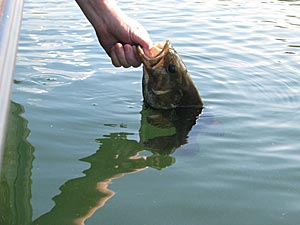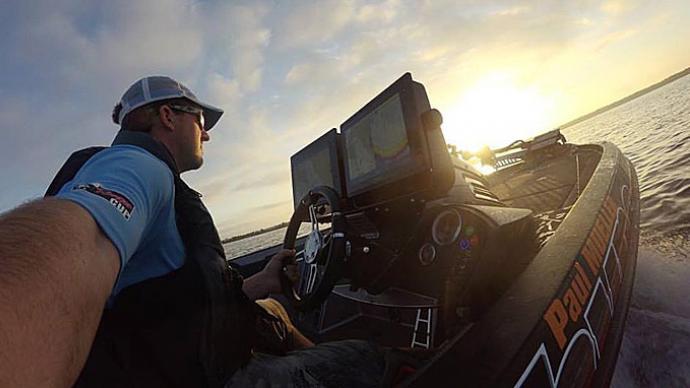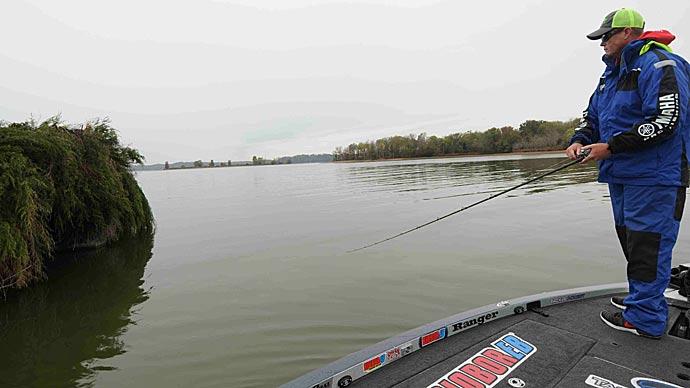
We’re coming into a season that often separates the bank beaters from the structure fishermen. That doesn’t mean shallow-water anglers can’t do well during summer months. However, anglers who are proficient with electronics and fish offshore efficiently tend to sack big bags of bass more consistently this time of year.
During my early days of club and tournament fishing, I fished against many great anglers who excelled without a depthfinder. But once the season rolled into the warm-weather months and the bass schooled on structure, the guys who had electronics dominated the tournaments.
This is even more important today, as modern electronics and all of their features will make you a better angler.
The Humminbird side-imaging unit is a classic example. I’m seeing things on the bottom and discovering subtleties of structure on my home lake that I never knew existed. That’s how good today’s electronics have become.
In the days before electronic mapping and GPS, I’d struggle in rainy and windy conditions trying to study a paper map for potential offshore hotspots. Now, I have even better maps downloaded in my graph with GPS waypoints marking the areas I want to fish. That makes structure details far more vivid and easier to locate.
Most anglers know that roadbeds, long main-lake points and channel bends are bassy areas during summer. However, because today’s anglers are so well educated in utilizing modern electronics, those traditional places get a lot of pressure.
Fishing pressure really hurts deep-water structure bass, which is why I prefer to target less noticeable structures if possible. They may not be as easy to find or hold as many fish, but they can offer more catchable fish. Spending time with good electronics will help you identify them.
When I’m uncertain which spots are most productive, I predetermine 20 or more potential areas and mark them on my GPS map. Once on the lake, I begin cruising them, keeping a watchful eye on the graph for bass and pods of baitfish.
Bait is the real key. Without it, bass won’t be there. If I don’t see bait, I don’t fish the spot and head to the next one.
Now, an exception to that is on lakes with lots of grass, because the bait and bass don’t show up as easily in the grass on the graph. So, if I come across a long grassy point extending into the lake, I’m going to take the time to fish it to determine if the bass are there.
On those places where I do find bait and bass, I determine which lure would be the best presentation to catch those fish. Generally, my top choices are either a deep-diving crankbait or a Carolina rig.
Current is another factor. If the water is moving, present your lure with the flow, position your boat on top of the structure and cast deep. Current puts bass tight to the bottom, and by pulling your bait up the break, it stays where the bass are.
If there is no current, the fish tend to suspend, so pulling the lure down the drop-off (from shallow to deep) keeps it in the strike zone longer.
Again, your electronics can tell you how the bass are positioned on the structure. If you see bait far off the bottom and bass suspended just beneath them, you’ll know to alter your presentation.
Keep in mind that Carolina rigs with a long leader and crankbaits that deflect off the bottom will catch suspended bass better than those lures that are constantly rooting along the bottom.
Summer fishing is a process of elimination, and good electronics will speed up the process. You still have to make the fish bite. But if you get in the right area, know the fish are there and present the bait properly, you’re going to have a better day on the water.
You can find more articles, quick tips and much more at HankParker.com.




